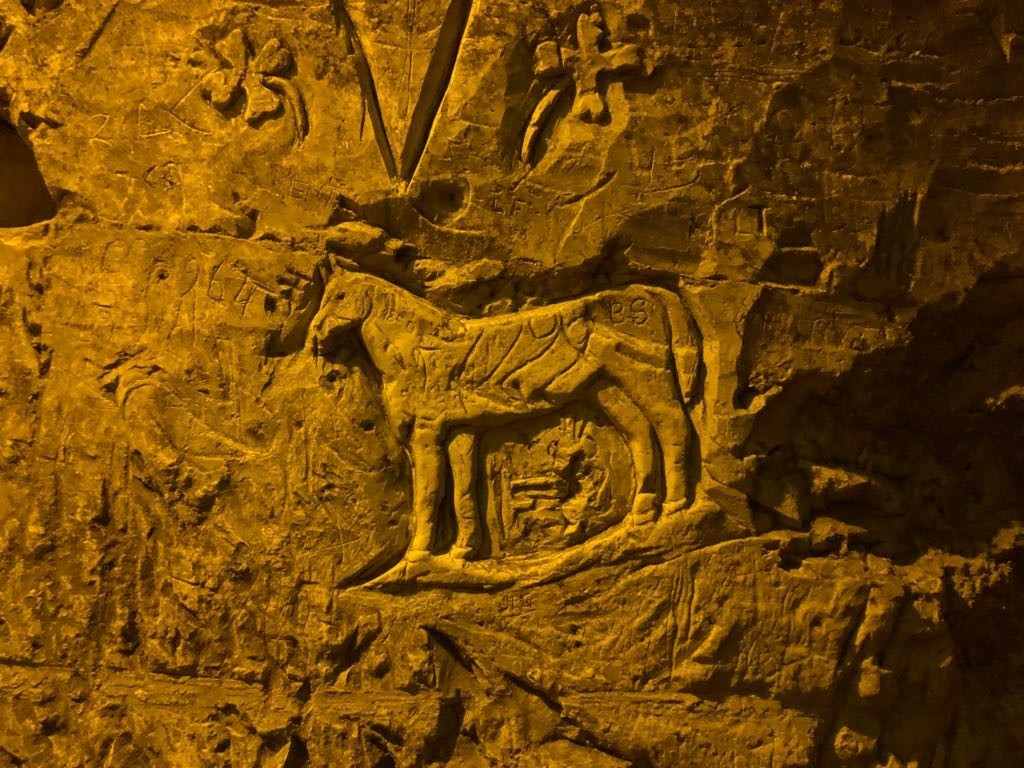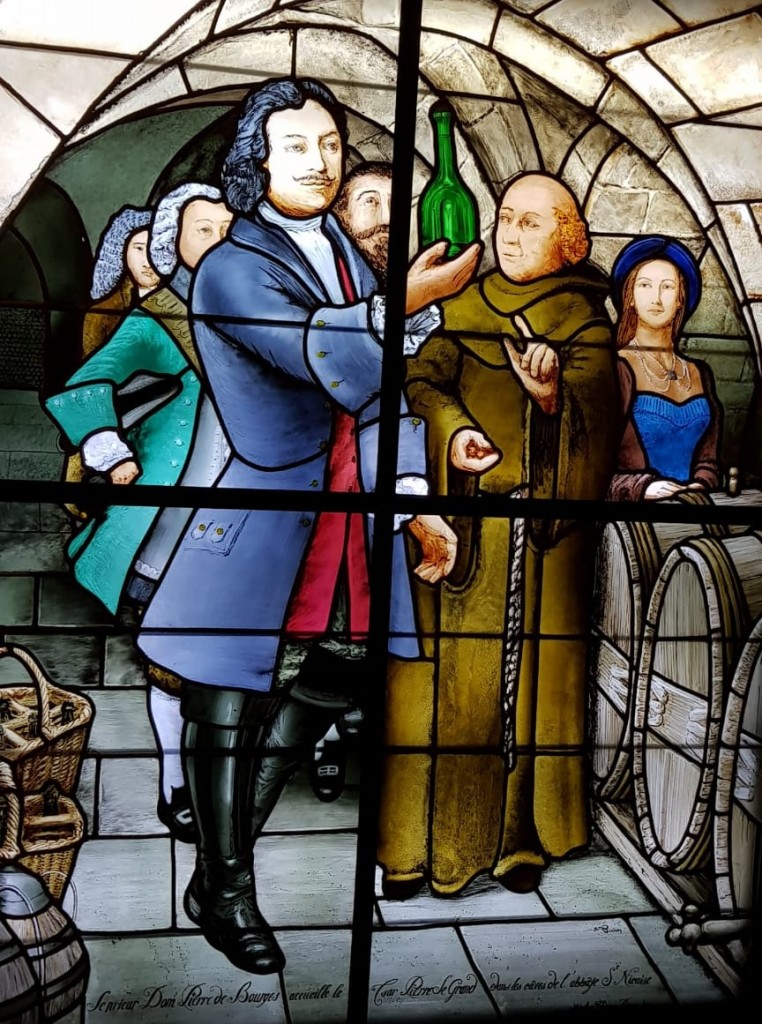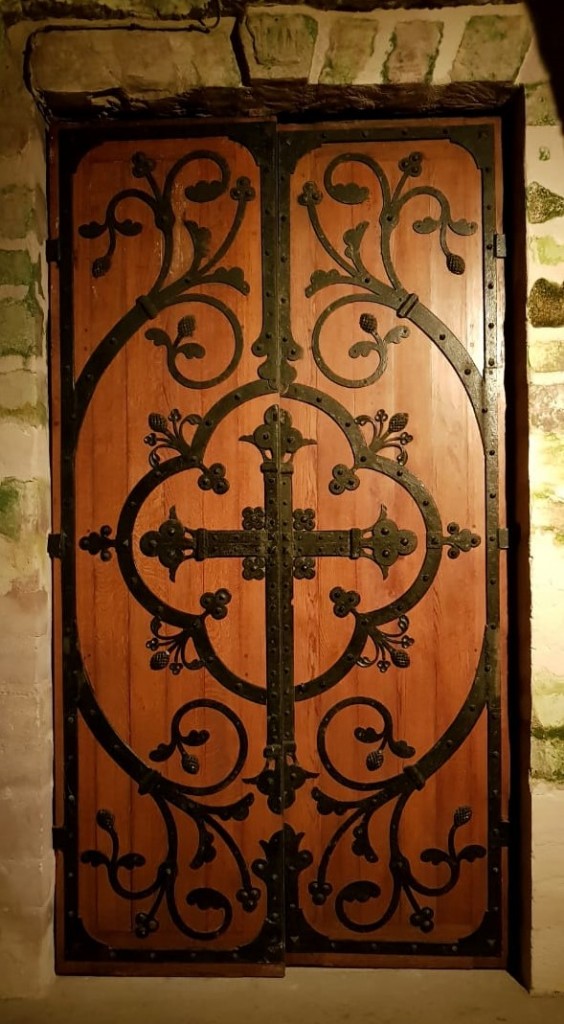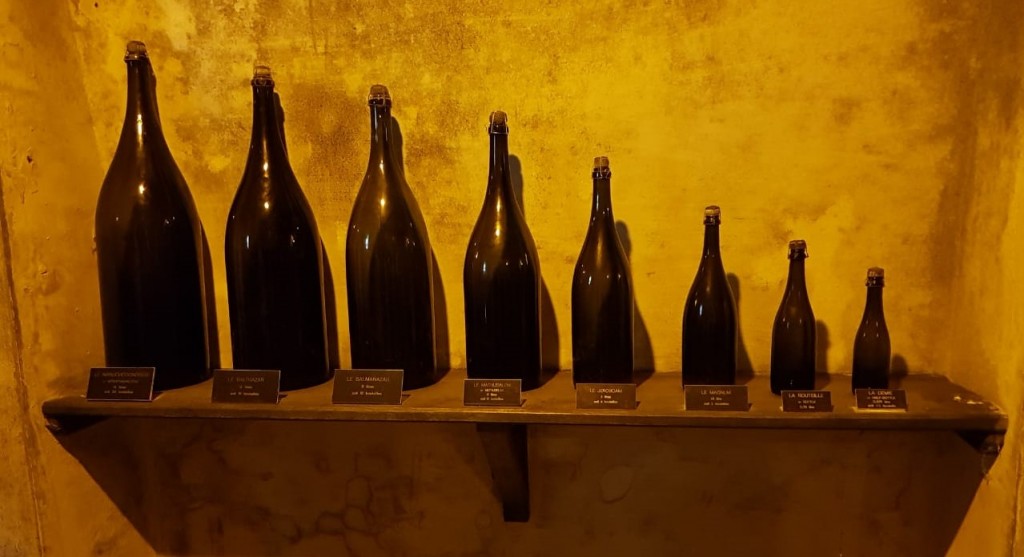Champagne Taittinger - Faces in the Stone
Champagne Taittinger - Faces in the Stone
Was it the one he loved, the one he gave his heart to? Or maybe his mother, to take away the excruciating pain of body and soul of this… the horrible nightmare that was called ‘the war that will end all wars’? The enigmatic face staring back from the limestone wall of the cave that once held the hospitalized remnants of men plucked from the front-line trenches of hell itself, is edged in stone forever by the hand of a soldier trying to escape the hard reality of the trench warfare of World War I. Next to this is an initial, a picture of a horse, a date - a voice calling from the past… “please remember me… do not forget…”
Many things will stay with me after our visit to the Taittinger caves in Reims… the haunting face to be only one.
Today however, this place of suffering has been resurrected as a place of beauty, tranquility and peace - holding in excess of 25 million bottles of the true ‘nectar of the gods’.
We were met at the front door by the charming Jean-Pierre Redont and taken on a journey into history - not only of the prestigious House of Taittinger, but also back to Roman times - in 300AC, when the first galleries that now forms part of their extensive underground cave system were dug wrestling the stone from the earth’s bosom to construct the architectural wonders that would eventually became Reims.
After wetting our appetites walking among the jewels being stored in the seemingly endless underground caves, we sat down for a private tasting that equally transported us to another world - this time to one of elegant refinement and style, where one after the other of these precious ‘nectar of the gods’ were poured for us to taste:
Brut Réserve Nv
An elegant blend of Chardonnay, Pinot Noir and Pinot Meunier, these grapes were selected from at least 35 different villages.
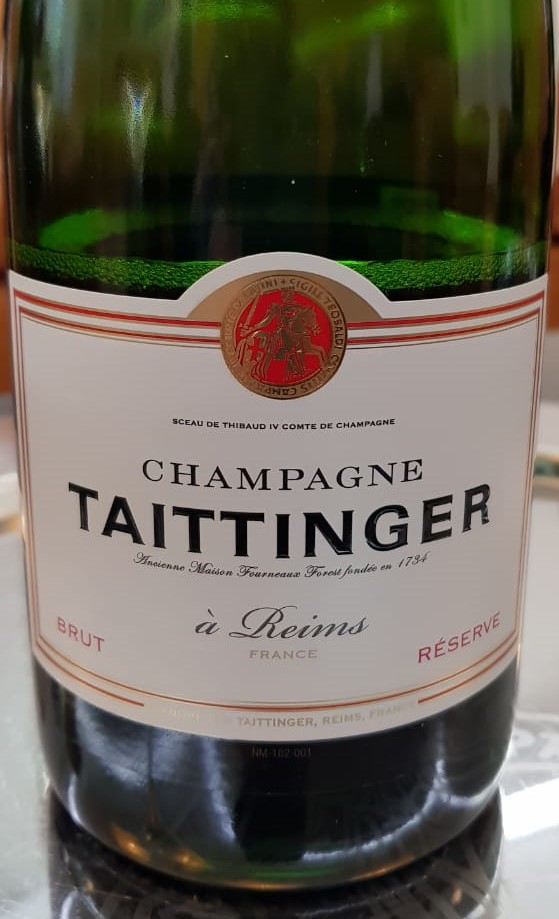
The high proportion of Chardonnay (40%) is unique among non-vintage Champagnes. There are champagne presses located in the vineyards to allow for immediate pressing of the grapes after the hand-picked harvest, and the resulting must is then cold fermented in temperature-controlled conditions. After resting until the end of winter, the wines are then selected and blended before the final cuvée undergoes a second fermentation in the bottle. The Brut Réserve spends almost 4 years on the lees, which is more than double the legal minimum of 15 months. This extra time in the cellar allows the wine to reach the optimal peak of aromatic maturity, and the result is a delicately balanced Champagne known for its consistently excellent quality.
Colour: This wine has a subtle, pale almost translucent yellow colour with a fine delicate perleage.
Nose: The Brut Réserve presents a nose of delicate floral aromas combined with fragrant citrus, white peach, and buttery toast with accents of honey. With a bit of time in the glass the nose opens up and becomes beautifully expressive with additional notes of yeasty brioche and vanilla pods.
Palate: The Champagne has an easy entry onto the palate – it is lively, fresh and in total harmony. The palate presents opulent flavours of grapefruit, acacia honey, salted caramel and hints of chalky minerality that lingers with a slight saline finish.
Food Pairing: This is a beautifully refreshing Champagne to be served as an apéritif or with a spring salad of asparagus and ruby grapefruit with a Champagne Sabayon.
Prélude Grand Cru Nv
Taittinger Prélude is produced exclusively from Grand Cru vineyards, with half the blend composed of Chardonnay, primarily from Avize and Le Mesnil-sur-Oger in the Côte des Blancs, and half of Pinot Noir mainly from Mailly, Bouzy and Ambonnay in the Montagne de Reims. Following the harvest, the grapes are pressed immediately in press houses located among the vineyards, yielding a first pressing which is the only one used to produce Prélude.
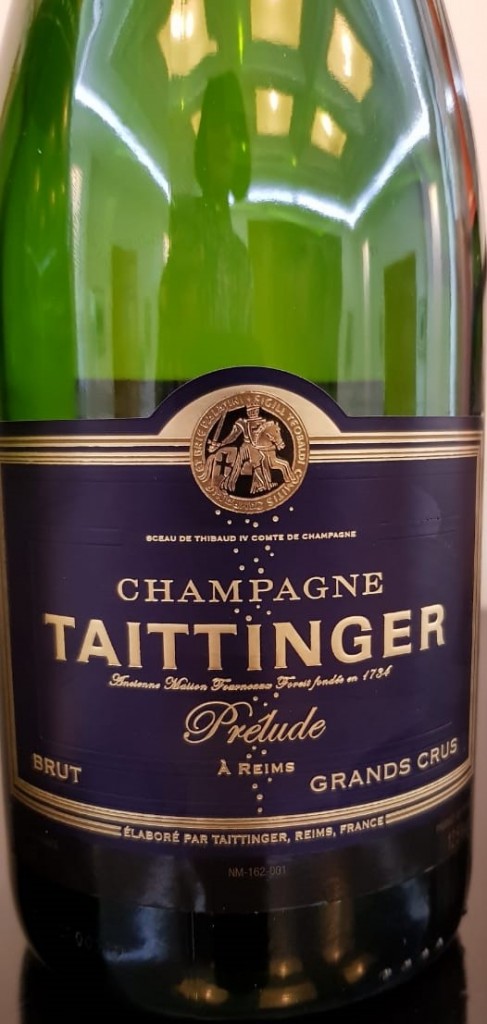
At the winery, fermentation takes place in temperature-controlled conditions. Blending occurs after the primary fermentation, and thereafter the final cuvée undergoes the second fermentation in the bottle in Taittinger’s caves, during which time the wine acquires its complexity. It is aged for 5 years on the lees, as opposed to the required minimum of 1 year, to develop a well-rounded body and bouquet adding the perfect structure for this Champagne. Once released the Champagne is at perfect maturation and it is recommended that Prélude be enjoyed fresh and young.
Colour: The Champagne has a pale-yellow wheat colour with silver highlights.
Nose: The wine is subtle and fresh on the nose. The initial mineral aromas quickly give way to floral notes combined with the fragrance of cumquats, lime, confit lemon and Pink Lady apples with a light spicy cinnamon undertone.
Palate: The entry onto the palate is clean and lively, with fresh citrus notes along with white peaches and pears. The finish is complex and rich with a lingering mineral undertone.
Food Pairing: The Prélude is excellent as an apéritif but would truly come to its potential when served with sweet shellfish like pan-seared scallops or lobster with a light citrus sauce.
Cuvée Prestige Rosé Nv
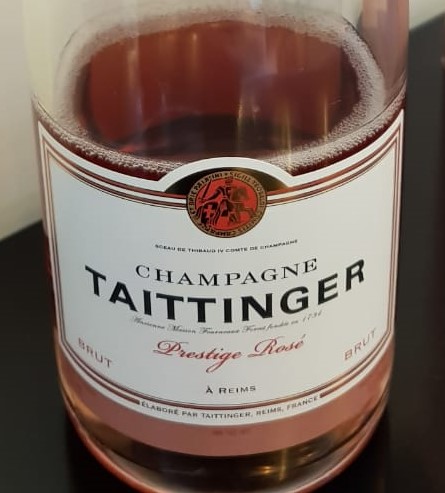
This elegant and refreshing Rosé is crafted from Chardonnay and Pinot Noir grapes harvested from the Montagne de Reims and Les Riceys. The majority of the grapes are pressed in vineyard press houses located in the vineyards. At the winery the must undergoes a cool-temperature fermentation - 85% of the blend is vinified as white wine and the remainder is vinified as red wine. The delicate colour and intense vibrancy on the palate is obtained by adding a small proportion of still red Pinot Noir from Ambonnay, Bouzy and Les Riceys. The final cuvée is blended from an extensive range of at least 15 diverse Crus, and usually more, from the Champagne region as well as young reserve wines that express the blend’s fresh, lively Pinot Noir fruit character. After second fermentation in the bottle, the wine spends 3 years on the lees in the bottle to develop an elegant complexity.
Colour: The intense and brilliant body is a deep rose and salmon pink colour with a warm tangerine glow. The bubbles are fine, and the mousse persistent.
Nose: The nose is wonderfully expressive with aromas of chalk, ripe sweet apples, red fruits, raspberry, cherry and blackcurrant.
Palate: The aromatic nose of this Champagne leads to a full, crisp, fresh palate filled with opulent red fruit flavours, as well as mineral elements that present themselves with a long and velvety finish.
Food Pairing: A subtle accompaniment to fruit desserts, including fruit tart, fruit salad or strawberry crumble. Perhaps try with light Chevre dishes in the form of a salad with apple and pomegranate. Monsieur Jean-Pierre even recommend that this champagne could be served with lamb.
Cuvée Les Folies de La Marquetterie Nv
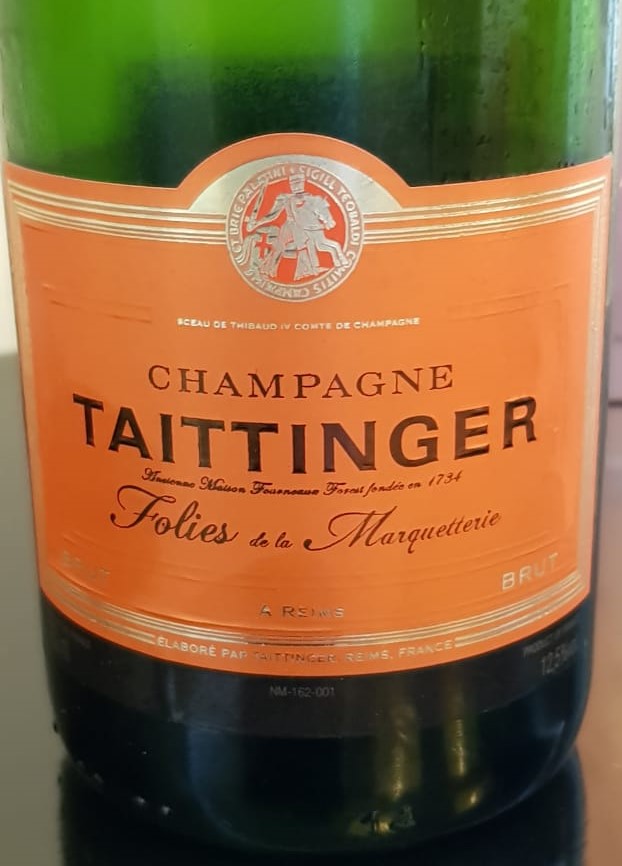
This single-vineyard cuvée is produced exclusively from grapes grown at Les Folies, a Taittinger-owned almost ‘clos’ shaped vineyard surrounding the Maison Marquetterie with a south/southwest exposure in the heart of the Champagne winegrowing region. A green harvest ensures that the final harvest has optimum sweetness and aromatic maturity. Only wines from the first pressing are used and each plot is vinified in small volumes, with certain lots in large, old oak foudres. Slow ageing for 5 years in the bottle brings the flavours of this Champagne to maturity.
Colour: This Champagne looks like a perfect sunset in the glass with a body of deep yellow and golden highlights. The bubbles are fine and delicate.
Nose: The intense, highly fruity bouquet leads to opulent ripe citrus aromas of cumquat preserve, lemon confit, nectarine and peach.
Palate: There is a beautiful and well-integrated perception of sweetness on the palate of this champagne. Full-bodied, smooth and fruity with dominant peach flavours, the distinctive and expressive finish delivers light woody notes.
Food Pairing: An ideal accompaniment to robust dishes such as roasted lamb, fish or seafood and pan-seared Sea Bass with Velouté.
Cuvée Comte de Champagne 2007

Produced only in exceptional vintage years and intended as the ultimate expression of the Taittinger style, this wine is composed entirely of Chardonnay grapes grown in the top vineyards of the prestigious Côte des Blancs. Only the wine from the first press is used: a sure guarantee of finesse. 5% of the wines used to make this champagne was aged for 4 months in new oak barrels (a third of which are renewed every year), enhancing the intrinsic qualities and complexities of the final blend. Prior to disgorgement, the Blanc de Blancs is aged for 10 years on the lees in 13th-century chalk cellars that were once the property of the Saint Nicaise Abbey. The Comte de Champagne Blanc de Blancs 2007 offers maturity and finesse. This champagne’s aromatic potential is just beginning to open up, suggesting a very good capacity to age.
Colour: Very pale-yellow colour with light, abundant bubbles which rise steadily to form a fine mousse.
Nose: The nose initially presents a fresh, refined tangerine-like fruitiness. It then develops more mature notes of ripe fruit, raisin pastries and candied fruit becoming more intense with notes of pastry cream. The finish is accompanied by a few lightly toasted notes. After a little more time in the glass the intensity presents the aromatic richness and maturity of a wine that is already expressing great potential revealing additional aromas of pears and white flowers.
Palate: The mid-palate is supple, full-bodied and rich, with flavours of grapefruit. The finish is lingering and refined with a hint of spice, reminiscent of liquorice sticks.
Food Pairing: A perfect accompaniment to sushi and first courses such as shellfish or seafood salads.
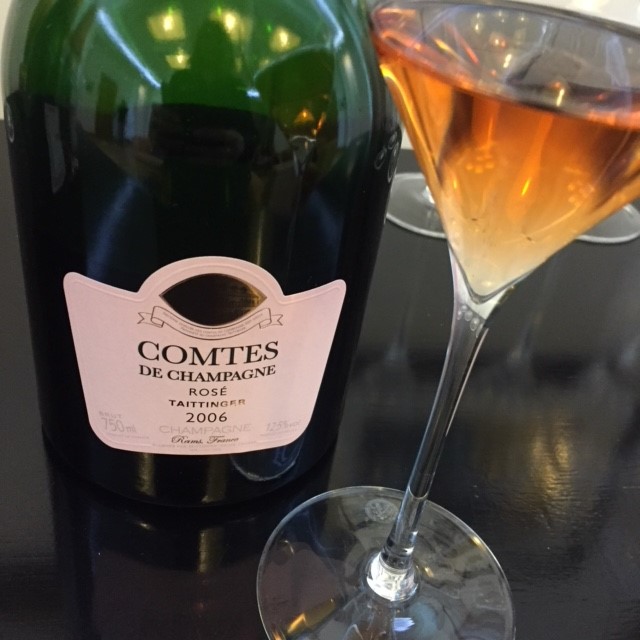
Cuvée Comte de Champagne Rosé Nv
The Comte de Champagne Rosé is made from 100% Grand Cru grapes and produced only in exceptional years. The Chardonnay grapes come from the most renowned vineyards of the prestigious Côte des Blancs, and the Pinot Noir from the Montagne de Reims. Only juice from the first pressing is used in order to ensure the structure and long ageing potential that is so essential to this exceptional Champagne. 12% of the Pinot Noir is blended in as still red wine. Cellar-ageing allows the complexity of the aromas to develop.
Colour: This Champagne features extraordinarily delicate bubbles. A rich salmon and tangerine colour, with touches of violet.
Nose: A fresh, highly refined nose with complex aromas of wild strawberries, morello cherries and black currants with hints of fresh almonds and liquorice. Intense aromas of ripe, sweet fruit, including crystallised strawberries, quince jelly, violet sweets and pears in syrup also develop with hints of the cooked fruit aromas of plum tart.
Palate: The initial fruitiness of blackcurrants quickly intensifies. The mid-palate confirms the aromas of sweet quince jelly and develops richness with flavours of cherry tobacco and fresh figs with peppery tones.
Food Pairing: Can be used during a meal to complement red meat like young pink lamb, or with a dessert of berries or fruit salad. Explore the possibility of serving the champagne with light goat’s cheese in salads with fresh Parma ham, figs and berries.
It was an exceptional experience to be invited for a private tasting at the House of Taittinger, and to explore the vast, immaculate underground caves filled with history and stories predating World War I, carved and captured into the soul of the cellar walls, forever leaving one speechless…
The Mosaic Team would like to thank Monsieur Jean-Pierre Redont and Champagne Taittinger for their hospitality in welcoming us. We look forward to present an exclusive tasting at Restaurant Mosaic featuring an exceptional collection of handpicked Taittinger champagnes.
Santé!
Chef Chantel


